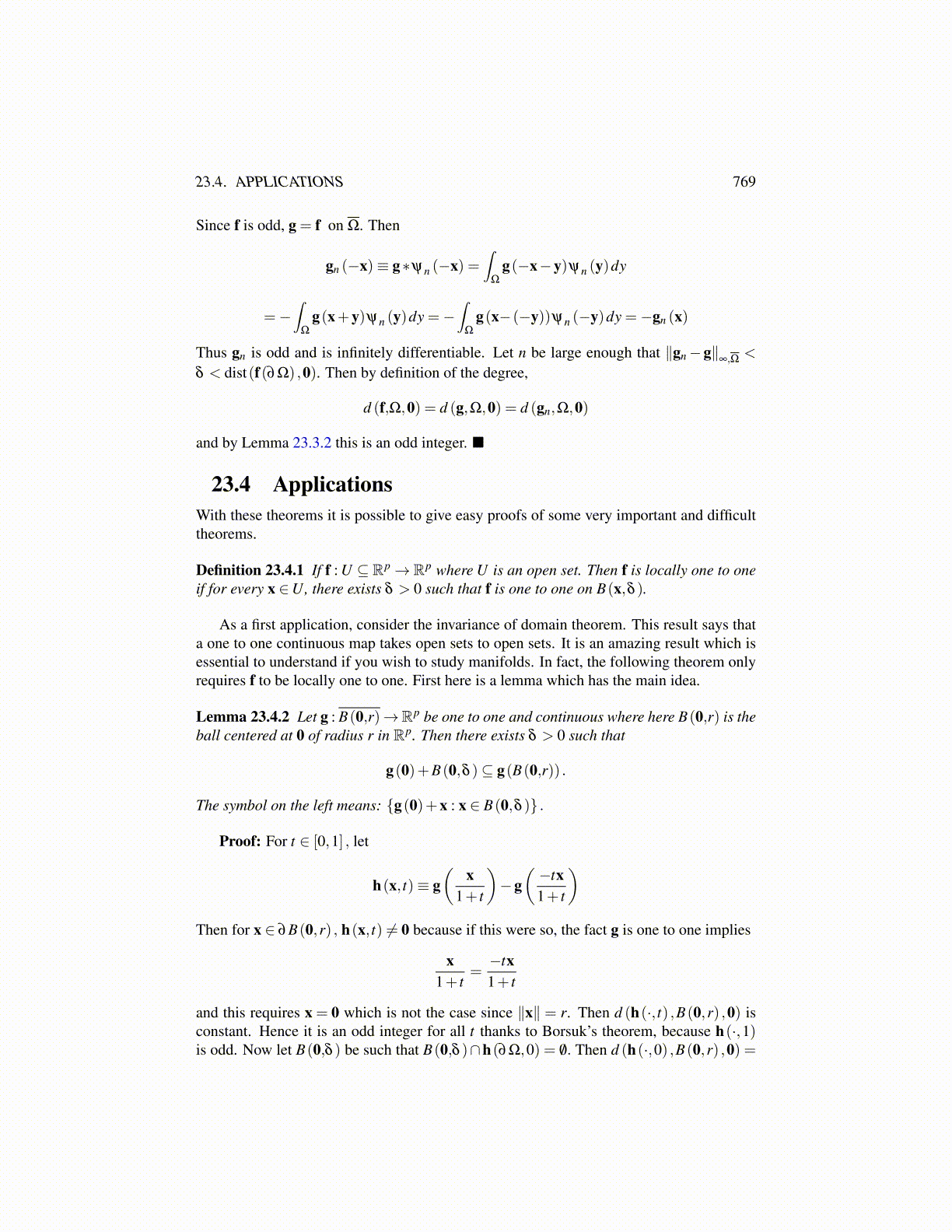
23.4. APPLICATIONS 769
Since f is odd, g = f on Ω. Then
gn (−x)≡ g∗ψn (−x) =∫
Ω
g(−x−y)ψn (y)dy
=−∫
Ω
g(x+y)ψn (y)dy =−∫
Ω
g(x−(−y))ψn (−y)dy =−gn (x)
Thus gn is odd and is infinitely differentiable. Let n be large enough that ∥gn−g∥∞,Ω <
δ < dist(f(∂Ω) ,0). Then by definition of the degree,
d (f,Ω,0) = d (g,Ω,0) = d (gn,Ω,0)
and by Lemma 23.3.2 this is an odd integer.
23.4 ApplicationsWith these theorems it is possible to give easy proofs of some very important and difficulttheorems.
Definition 23.4.1 If f : U ⊆ Rp→ Rp where U is an open set. Then f is locally one to oneif for every x ∈U, there exists δ > 0 such that f is one to one on B(x,δ ).
As a first application, consider the invariance of domain theorem. This result says thata one to one continuous map takes open sets to open sets. It is an amazing result which isessential to understand if you wish to study manifolds. In fact, the following theorem onlyrequires f to be locally one to one. First here is a lemma which has the main idea.
Lemma 23.4.2 Let g : B(0,r)→Rp be one to one and continuous where here B(0,r) is theball centered at 0 of radius r in Rp. Then there exists δ > 0 such that
g(0)+B(0,δ )⊆ g(B(0,r)) .
The symbol on the left means: {g(0)+x : x ∈ B(0,δ )} .
Proof: For t ∈ [0,1] , let
h(x, t)≡ g(
x1+ t
)−g(−tx1+ t
)Then for x ∈ ∂B(0,r) , h(x, t) ̸= 0 because if this were so, the fact g is one to one implies
x1+ t
=−tx1+ t
and this requires x = 0 which is not the case since ∥x∥ = r. Then d (h(·, t) ,B(0,r) ,0) isconstant. Hence it is an odd integer for all t thanks to Borsuk’s theorem, because h(·,1)is odd. Now let B(0,δ ) be such that B(0,δ )∩h(∂Ω,0) = /0. Then d (h(·,0) ,B(0,r) ,0) =